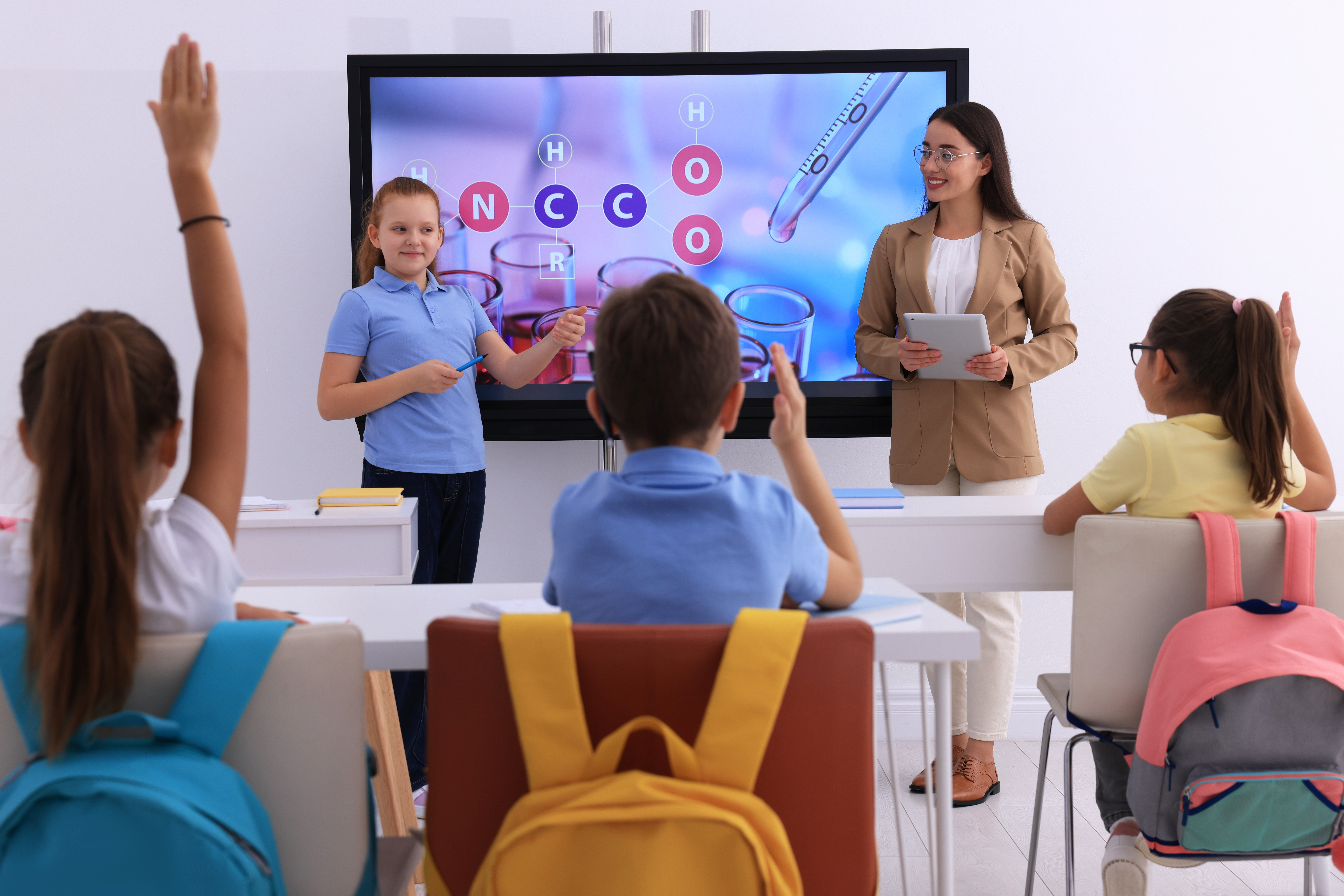Can Modern Interactive Flat-Panel Displays Help Teachers Take Their Teaching to The Next Level?

Currently, school districts are making several million-dollar investments in upgraded networks and devices, including new modern interactive flat-panel displays (IFPDs). School districts allocate resources to purchase IFPDs, aiming to create a socially engaging classroom environment. Market analysis reports such as the Futuresource report (released in Quarter 4 2020) and Zion Market Research (released in 2022) mention that the global sales volume of Interactive Flat Panel Displays and Interactive Whiteboards are experiencing a noticeable increase, and their overall value is also on the rise. Looking ahead, this trend is expected to continue, indicating a positive trajectory for these technologies.
These school district efforts support educators in rethinking and refining their teaching strategies. The IFPDs also improve classroom accessibility. These initially easy-to-use devices offer quick and simple implementation, configuration, and operation. Studies demonstrate these benefits of modern IFPDs in classrooms:
- Engagement Boost: Dynamic visuals and touch interaction capture student attention and participation.
- Active Learning: Interactive features foster collaboration and hands-on engagement.
- Rich audio-visual learning content: Presentation of up-to-date multimedia presentations and interactive resources such as videos, simulations, and animations which all cater to diverse learning preferences and styles.
- Collaboration Hub: Real-time sharing and whiteboard tools encourage teamwork and creativity.
Nevertheless, testimonials from everyday practice indicate that there is a gap between the potential claims of this technology, which is not considered futuristic any more, and its actual use in the classrooms. If teachers are averse to learning new technologies, the board becomes simply a projector or display for videos.
How many teachers are actually applying different classroom teaching models in order to provide effective and efficient learning? For example, do they ask students to work in groups in front of a panel operating in split-screen mode, while some members of the group solve a math problem in steps? Do they use the board to highlight syntax in a text displayed on the panel, using the stylus, while the other group members take notes? How many teachers use cooperative or competitive educational games in split-screen mode?
Have you ever been in a classroom where a technician installed a modern interactive flat-panel display at a height that students, especially young ones, cannot reach directly? This approach might be intentional for various reasons. The administrator or technician might think this may prevent accidental damage, or reduce distractions, or ensure a clear line of sight for all students in the classroom. Unfortunately, this installation doesn’t provide students with the interactivity that is a “secret sauce” these IFPDs can bring to a classroom. Installation that is too high supports board use as a projector or display instead of capturing the touch and feel of learning concepts in a tactile way.
It is critical to ensure proper installation of IFPDs in order to promote a learning environment conducive to supporting efficient teaching which contributes to the overall success of technology-enhanced education in the classroom. Particularly, for promoting inclusive learning, an appropriately placed IFPD ensures that all students, including those with diverse abilities, can comfortably access the content being presented.
Mounting the display on a specialized electronic height adjustable stand can offer optimal accessibility. These stands enable personalized display positioning, ensuring comfortable access for all students, regardless of their physical abilities. This inclusivity empowers ALL students including ones with mobility challenges to actively engage and participate in classroom activities, promoting a more equitable learning environment. Envision the issues for a wheelchair bound student trying to reach to touch a panel. Their wheel chair arms and the child’s knees prevent their reaching the panel. With the flexible stand, the child can slide their chair and knees under the panel, allowing them to reach up to engage with the board with ease. Additionally, some panels actually can be used as an interactive table, with students seated or standing around the screen. This is truly empowering for those students with mobility issues, as well as motivational engagement in the content for everyone.
An important point is that the many tools and resources these modern IFPDs afford are not self-evident. Perhaps the most important benefit these boards offer is interactivity. Educational providers should focus on creating specialized learning tools for these modern interactive flat-panel displays in order to promote the interactivity enabling teachers to take their teaching to the next level. Such tools could be in the form of interactive manipulatives, game-based assessment, and educational games that facilitate group practice.
But for teachers to have access to appropriate learning platforms specially designed for increasing engagement, motivation and enhancing academic achievements, they need to know about the advantages these boards provide. Once trained, they will can use interactive manipulatives, game-based assessment activities, and educational games that also facilitate group practice.
In summary, education technology is only as valuable as the way it is implemented. The teacher’s understanding of the need for using this technology is critical. It is vital that teachers are properly trained in the most effective ways of capturing and utilising the strengths of this technology. Perhaps most of all they need to feel comfortable enough to use it frequently. A technology can be put aside if not used continually integrated in daily lessons.
Thanks to IFPDs, all are members key to implementing this “sea change” wave in what a classroom that embraces technology looks, acts and feels like!